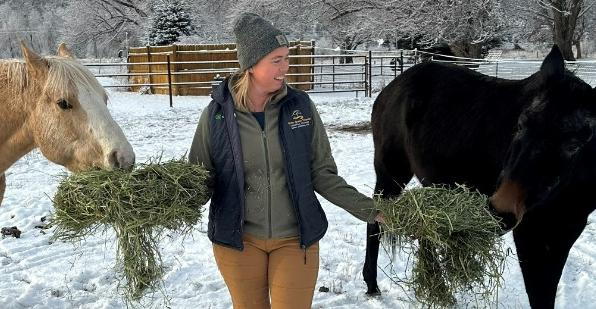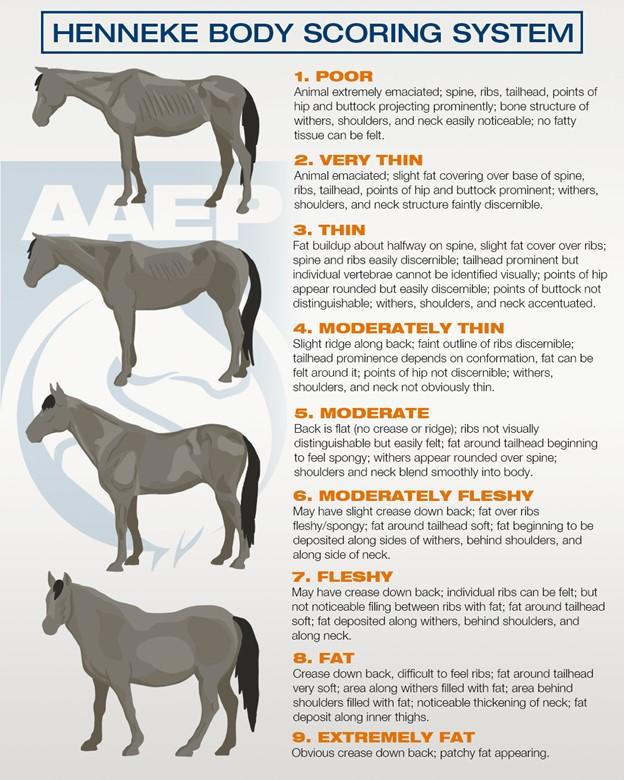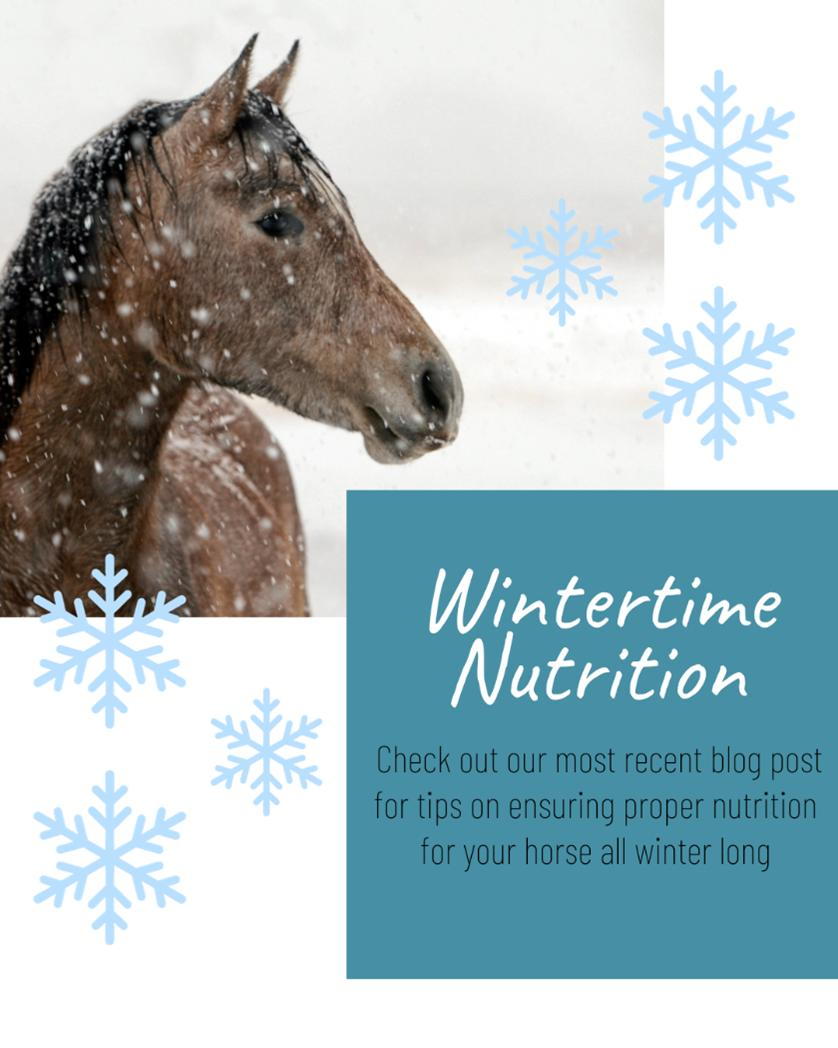
As more snow accumulates on Mt Sopris, it’s important to evaluate your feeding program to ensure your horse is getting all the nutrition it needs this winter season.
Horses normally eat 1.5-2% of their body weight every day, the majority of these calories should be forage. For example, Lily is an approximately 1100lb mule, so she requires 16.5-22lbs of feed per day. Horses are hind gut fermenters, digestion in their hind gut turns food into energy and produces heat as a byproduct. The colder the weather, the more calories your horse needs to consume daily to adequately heat themselves from the inside out. Additional stress factors may also increase their required intake such as chronic pain, metabolic diseases, parasite infestation, or illness. Proper vaccines and deworming should be given prior to the onset of winter and potential illness should be promptly addressed with your veterinarian.
An average horse will a moderate hair coat will start requiring more calories at a critical temperature of approximately 50*F. For every 10* the temperature drops an additional 10% more calories should be added. Horse can eat a max amount of 2.75% of their body weight per day so If your horse is unable to eat enough forage to get appropriate calories, supplementation of grains and oils may be needed. With this consideration, horses should eat at last 2/3 of their calories in forage. Luckly, horses naturally grow a thick insulating coat in the wintertime. If your horse is an expert at growing hair, this may decrease the critical temperature. On the other hand, if your horse’s coat becomes wet, this can increase the critical temperature. To continue our example from earlier, Lily grows an average coat. If we get a cold weather week where its an average of 15*, this will mean that she needs a 35% increase in food. This would be approximately 8lbs and if you add that to her standard amount of feed per day and we get 30lbs. Is she able to eat that much forage daily (is that less than 2.75% of her body weight)? Yes! It would be 2.7%, she could satisfy her nutritional needs in that cold weather with increased forage alone. As always, all changes in feeding should be gradual and happen over days or weeks. Keep an eye on the weather so you can adequately prepare to increase feed.
It is also important to evaluate the quality of hay you are providing. The above numbers assume your hay is of average quality providing 1Mcal/lb, but this can vary by 5-10% depending on source and time harvested. If you have concerns about your quality of hay and assuring your horse is getting adequate nutrition, we provide hay quality analysis and nutritional consults.
Another important aspect of nutrition in the wintertime is access to water. Water is essential for digestion; horses prefer water between 45-65*F and are less inclined to drink when their water falls outside this range. Decreased consumption of water can lead to dehydration, poor digestion efficiency, impactions, and colic.
With extra hair or the use of blankets in the wintertime, make sure you are putting your hands on your horse and evaluating their body condition a few times weekly. It can be beneficial to monitor trends in body weight with a weight tape, feel free to call the office or stop in to receive a free weight tape! Horses in the wintertime should be at least a 5-6/9. Use the chart in this post to help you determine your horse’s current body condition.

Horses have an incredible ability to survive in cold weather, but with our help we can make sure they thrive all winter long.

